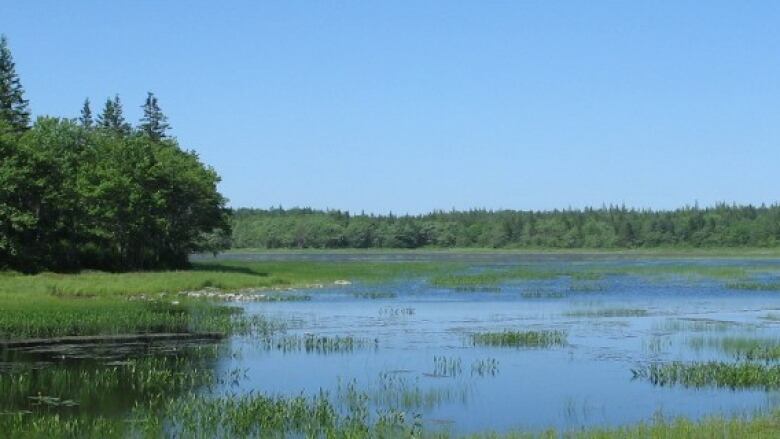Picnics welcome, drones banned in Canada's national wilderness areas
Nova Scotia has six federal wildness areas, with a seventh pending

Aerial drones will be banned, dog leashes made mandatory and small group picnics allowed inside Canada's 55 national wilderness areas under a proposed overhaul of rules governing access to federal wilderness lands.
Environment and Climate Change Canada said its goal is to better manage more than a million hectares of wildlife habitat across the country.
Sabrina Kemp,manager of wildlife compliance, promotion and regulatory development in the Canadian Wildlife Service, said much has changed since the national wildlife area rules were created more than 40 years ago.
Like the arrival of aerial drones.
"That's a new reality. We've proposed prohibiting the taking off and landing of drones within the national wildlife area because that would minimize low level flight of drones and that's of most concern," said Kemp.

Federal wildlife areas are not national parks, which are designed to reflect eco-regions of Canada and attract people. Wildlife areas are set aside to protect wildlife first and foremost.
The regulatory update proposes new prohibitions, changes existing ones and clarifies activities allowed under permit.
Some of the changes:
- Bans the introduction of organisms to protect from invasive species.
- Wildlife officers will have the power to capture,even destroy domestic animals that pose a danger in a national wildlife area.
- Domestic animals must be on a leash no longer than three metres.
- The new regulations would lift a ban on picnics,but limit them to 15 people to prohibit large groups such as organized bus tours.
- Bans selling of goods and services inside a wildlife area, but allows paid non-intrusive wildlife trips sold outside.
If adopted, new regulations would come into force in the winter or spring of 2020. Ottawa has invited public comment until July.

Garry Donaldson, manager of wildlife assessment for the Atlantic region of the Canadian Wildlife Service, said the modernization has been in the works for a while.
"We're hoping to really strengthen our ability to protect nature and I think that these new regulations allow us to do that in a fair way across the country, and certainly Atlantic Canada and Nova Scotia will benefit from those changes."
Nova Scotia's national wildlife areas
There are six national wildlife areas in Nova Scotia. All but one are on the coastline.
- Sand Pond is the lone inland wildlife area. It covers 531 hectares in Yarmouth County.
- Boot Island is in the Minas Basin at the mouth of the Gaspereau River.
- Chignecto near Amherst.
- John Lusby Marsh, a large salt marsh also near Amherst.
- Wallace Bay on the Northumberland Strait.
- Sea Wolf Island near Margaree in the Gulf of St. Lawrence.
A seventh national wildlife area is progress. It isIsle Haute,an 80-hectare area in theupper Bay of Fundy.












_(720p).jpg)


 OFFICIAL HD MUSIC VIDEO.jpg)
.jpg)



























































































